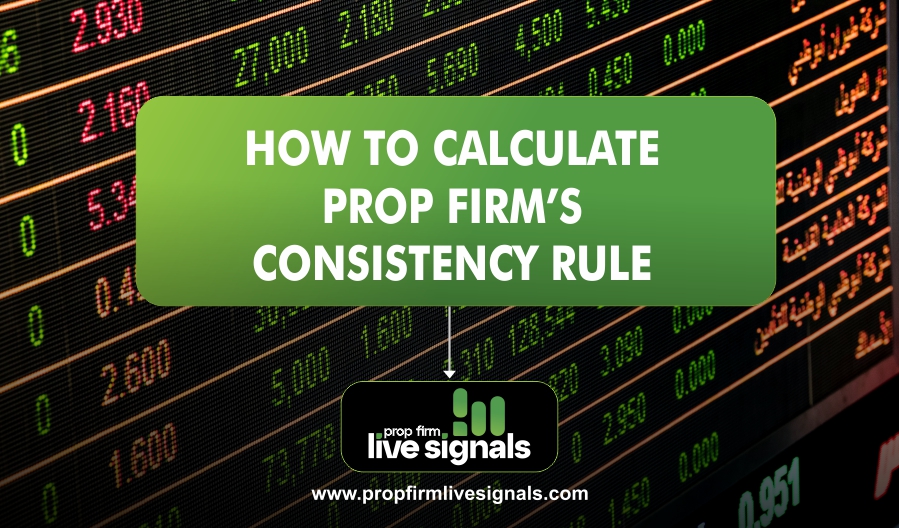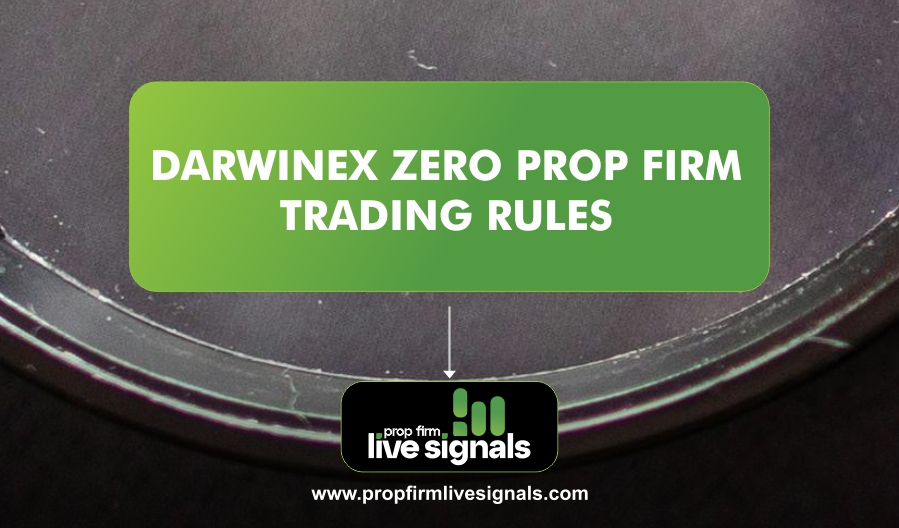What is a Prop Firm?
A proprietary trading firm is a business that uses its own capital to trade in financial markets. Instead of investing clients’ money, a prop firm hires traders to manage the firm’s funds in return for a profit-sharing arrangement.
Key Points:
- Leverage: Traders in prop firms trade using the firm’s capital, which allows them to access larger positions than they could with their own funds.
- Profit Sharing: The trader typically receives a percentage of the profits they generate.
- Risk Management: Prop firms set specific rules and guidelines to ensure that traders minimize risk and avoid excessive losses.
What is the Consistency Rule in Prop Firms?
The consistency rule is a set of criteria that prop firms require traders to meet before they can qualify for a funded account. This rule typically assesses a trader’s ability to produce consistent, reliable returns over a certain period, without encountering substantial drawdowns.
Prop firms are risk-averse businesses, so they want to make sure that the traders they fund can handle market fluctuations and avoid blowing through the capital. Traders who pass the consistency rule show that they can maintain a steady performance, even during volatile market conditions.
How to Calculate Prop Firm’s Consistency Rule?
Calculating the consistency rule involves several factors, including profit targets, maximum drawdown, trading days, and more. Below is a step-by-step guide to help you understand the factors involved in calculating the consistency rule.
1. Profit Targets and Growth Rates
To pass a prop firm’s consistency rule, a trader must demonstrate an ability to produce a consistent growth rate in their trading account. This growth is usually measured on a monthly basis and compared to predefined targets set by the firm.
How to calculate:
- Monthly profit target: Prop firms typically require a trader to achieve a specific monthly profit. This is often a percentage of the initial capital (for example, 5% monthly).
- Example: If the firm offers $50,000 in capital, the trader must make at least 5% ($2,500) profit per month.
2. Maximum Drawdown
One of the most crucial aspects of the consistency rule is the maximum drawdown—the largest peak-to-trough loss a trader can take without being disqualified from the program. Prop firms tend to allow a maximum drawdown of anywhere between 5% and 10% of the total account balance.
How to calculate:
- Drawdown is calculated as the difference between the highest point (peak) and the lowest point (trough) of the account balance.
- Example: If the account balance peaks at $50,000 and then falls to $47,000, the drawdown would be $3,000, or 6%.
3. Trading Days
Consistency is not just about profits, but also about trading frequency. Prop firms may require traders to demonstrate their ability to trade consistently over a set period of time. For instance, a prop firm might require a trader to place a minimum number of trades per week or month.
How to calculate:
- Minimum number of trading days: Some firms require traders to execute at least 10 trades per month, for example.
- Example: If a firm requires 10 trades per month, and a trader places only 5 trades in a given month, they may not meet the consistency rule.
4. Risk-to-Reward Ratio
Another aspect of the consistency rule involves managing risk properly. The risk-to-reward ratio measures how much risk a trader is willing to take versus the potential reward. Prop firms often look for traders with favorable risk-to-reward ratios.
How to calculate:
- Risk-to-reward ratio: The risk is how much you’re willing to lose on a trade, while the reward is the amount of profit you’re targeting.
- Example: If a trader risks $100 on a trade, but targets a profit of $300, their risk-to-reward ratio would be 1:3.
5. Win Rate and Risk Management
A prop firm will also assess a trader’s win rate (the percentage of winning trades) and their ability to adhere to risk management principles. The consistency rule often includes guidelines to keep the win rate and risk management within a certain range to avoid high volatility and blowout trades.
How to calculate:
- Win rate: The win rate is calculated as the number of winning trades divided by the total number of trades.
- Example: If a trader makes 50 trades in a month and wins 30 of them, their win rate is 60%.
Example
To Calculate Prop Firm’s Consistency Rule
Let’s walk through an example:
- Initial Capital: $50,000
- Monthly Profit Target: 5% (i.e., $2,500)
- Maximum Drawdown: 10% (i.e., $5,000)
- Risk-to-Reward Ratio: 1:3
- Minimum Trading Days: 10 trades per month
- Win Rate: Target of 60%
Scenario:
- The trader makes 15 trades in the month, with 9 winners (60% win rate).
- The total profit from the 9 winning trades is $2,700 (meets monthly profit target).
- The total drawdown during the month is $3,000 (within the allowable drawdown of $5,000).
- The risk-to-reward ratio is 1:3, meaning the trader has set up each trade to risk $100 for a potential reward of $300.
In this scenario, the trader passes the consistency rule for the prop firm, as they meet the minimum criteria for profit, drawdown, trading frequency, and risk management.
Why is the Consistency Rule Important?
1. Risk Management
The consistency rule ensures that traders can manage risk effectively. It helps prevent traders from taking large, reckless positions that could result in devastating losses. A prop firm wants to minimize the likelihood of major drawdowns, and the consistency rule provides a clear structure for managing risk.
2. Long-Term Success
The consistency rule helps to weed out traders who may have short-term success but lack the discipline to maintain steady growth. Prop firms prefer traders who can generate consistent returns over time rather than those who achieve a few lucky trades followed by large losses.
3. Performance Tracking
By adhering to the consistency rule, prop firms can track a trader’s performance more accurately. This gives them insight into the trader’s behavior and trading strategy over a prolonged period, which is crucial for making decisions on funding and scaling the trader’s account.
Conclusion
Understanding and calculating a prop firm’s consistency rule is crucial for aspiring traders. By focusing on profit targets, drawdown limits, and risk management, traders can develop strategies to meet these rules and enhance their trading discipline and success. Staying consistent with key factors improves performance and increases the chances of success in prop trading.
Frequently Asked Questions (FAQ)
How strict are the consistency rules?
The consistency rules vary from one prop firm to another, but most prop firms enforce strict guidelines to ensure that traders manage risk appropriately. If a trader violates these rules, they may lose their funded account.
Can I skip the consistency rule?
No, most prop firms require traders to adhere to the consistency rule to ensure that they have the discipline needed to trade with the firm’s capital.
Can I pass the consistency rule with low win rates?
While a lower win rate may be acceptable as long as your risk-to-reward ratio is favorable, a consistently low win rate can raise concerns about your overall trading strategy.
Do consistency rules apply to all accounts?
Yes, consistency rules typically apply to both demo and live trading accounts. Traders are required to pass the demo stage before moving on to a funded live account.
How often do I need to hit the profit target?
The frequency of hitting profit targets varies from firm to firm, but most require traders to meet the target consistently each month.




